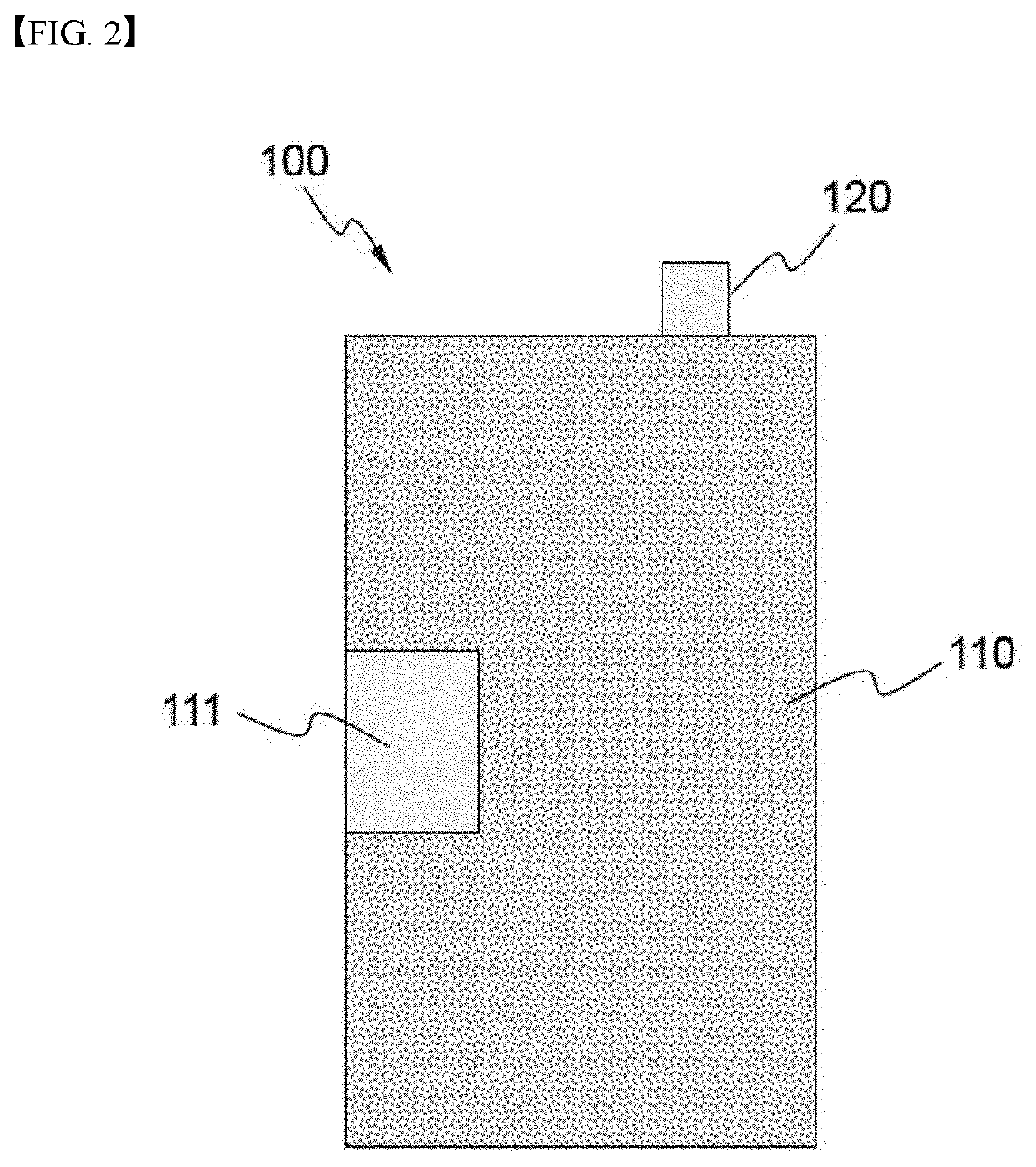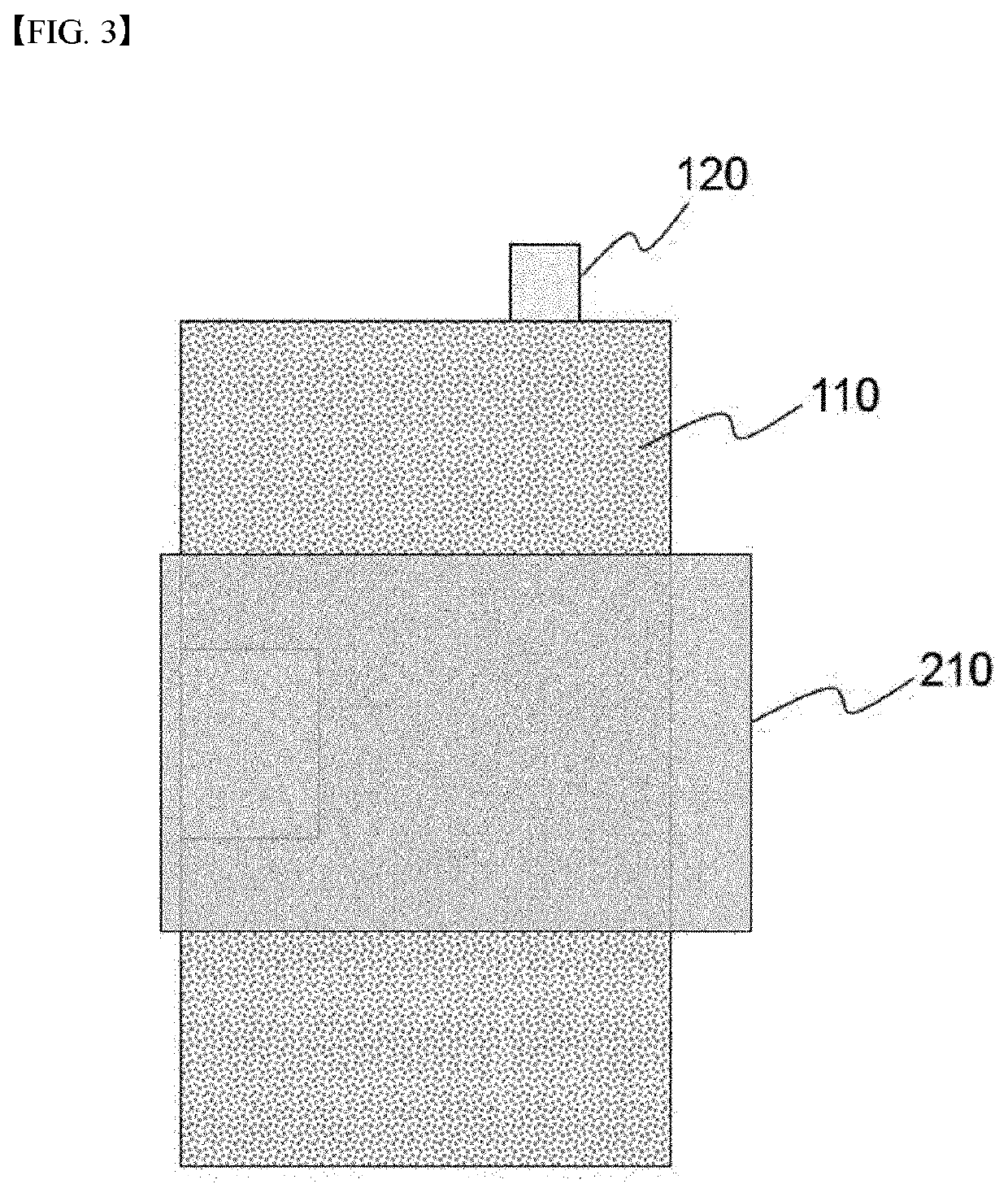Battery cell for testing internal short circuit, and method for testing internal short circuit of battery cell by using same
- Summary
- Abstract
- Description
- Claims
- Application Information
AI Technical Summary
Benefits of technology
Problems solved by technology
Method used
Image
Examples
first embodiment
[0086]FIG. 1 is an exploded perspective view of a battery cell for evaluating an internal short circuit according to an embodiment of the present invention. Referring to FIG. 1, the battery cell has a structure in which a first electrode 100, a first sub-separator 210, a first short circuit electrode 310, a main separator 200, a second short circuit electrode 320, a second sub-separator 220, and a second electrode 400 are sequentially stacked. The first electrode 100 has a structure in which a non-coated part is formed on a part of the surface of the first electrode. The first sub-separator 210 has a structure which covers the non-coated part formed in the first electrode 100 and is extended in a right direction. The first short circuit electrode 310 is located on the first sub-separator 210. The first short circuit electrode 310 is formed of a porous metal foil, has a size corresponding to the non-coated part of the first electrode 100, and has a tab protruding in the left side of ...
second embodiment
[0088]FIGS. 2 to 9 are diagrams illustrating assembling procedures of a battery cell for evaluating an internal short circuit according to one embodiment of the invention. Referring to FIG. 2, the first electrode 100 is formed of an aluminum foil and has a first electrode tab 120 protruding in the right upper direction, and the portion other than the first electrode tab 120 is the first electrode coated part 110 on which the electrode mixture layer is applied. The first electrode non-coated part, to which the electrode mixture layer has not been applied, is formed in the left center portion of the first electrode coated part 110. The area where the first electrode non-coated part 111 is formed corresponds to about 8% of the area of the first electrode coated part 110.
[0089]Referring to FIG. 3, the first sub-separator 210 is stacked on the first electrode 100 of FIG. 2. The first sub-separator 210 has a structure which covers the first electrode non-coated part 111 and is extended in...
PUM
 Login to view more
Login to view more Abstract
Description
Claims
Application Information
 Login to view more
Login to view more - R&D Engineer
- R&D Manager
- IP Professional
- Industry Leading Data Capabilities
- Powerful AI technology
- Patent DNA Extraction
Browse by: Latest US Patents, China's latest patents, Technical Efficacy Thesaurus, Application Domain, Technology Topic.
© 2024 PatSnap. All rights reserved.Legal|Privacy policy|Modern Slavery Act Transparency Statement|Sitemap



